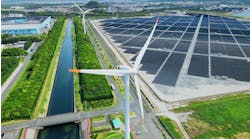In a recent technical blog entitled Five Strategies to Decarbonize Existing Buildings, Sustainable Investment Group (SIG), a green building consulting firm headquartered in Atlanta, GA, lists its most important priorities for smart building decarbonization, proceeding from the premise that "there is no surprise that new buildings can achieve low or zero-carbon targets easier than existing buildings, because project teams can work from the very beginning to develop a building that serves the desired outcome. However, the situation for existing buildings is much more complicated," contends the consulting firm.
The blog goes on to lay out the best ways to decarbonize an existing building, as reckoned by the consulting firm. The article proceeds to answer the question, How can an existing building become a decarbonized one?, by way of noting that:
"Decarbonized buildings are much more feasible when the definition is extended beyond the boundary of individual buildings that allow the use of off-site clean energy to those that can generate clean energy and potentially work with other surrounding buildings in a particular city or district."
See Also: Schneider Electric, Citizens Energy plan campus microgrid in CT
SIG's top five strategies that the firm feels can potentially bring the highest return to building operators for the effort invested in decarbonization technology include areas of:
- 1) Prioritizing energy efficiency, especially in the areas of insulation, ventilation, LED lights.
- 2) Using renewable energy wherever possible.
- 3) Becoming carbon neutral or significantly offsetting carbon use.
- 4) Prioritizing on-site energy generation.
- 5) Reducing embodied carbon prior to carbon offsets.
In a short discussion about other technologies that can support decarbonization pathways, SIG observes that "these technologies cover different climates, budgets, and existing levels of competence. Energy efficiency options range from the use of passive strategies like the smart use of natural daylight, natural ventilation, insulation, and evaporative cooling to active measures like high-efficiency heating, ventilation, and air-conditioning (HVAC) systems, LED lighting, and efficient appliances."
The blog adds that "the most commonly used renewable energy technologies are on-site PV panels, solar water heaters, and off-site renewable energy systems, like solar power plants, hydropower plants, and wind turbines."
Examine the detailed list of decarbonization strategies and complementary technologies at SIG's full blog, here.
In the video below, the CEO and co-founder of Sustainable Investment Group (SIG), Charlie Cichetti, provides an overview of the green building consulting firm. Headquartered in Atlanta, GA, SIG also has offices in Boulder, CO, Minneapolis, MN, New York, NY and San Francisco, CA.


